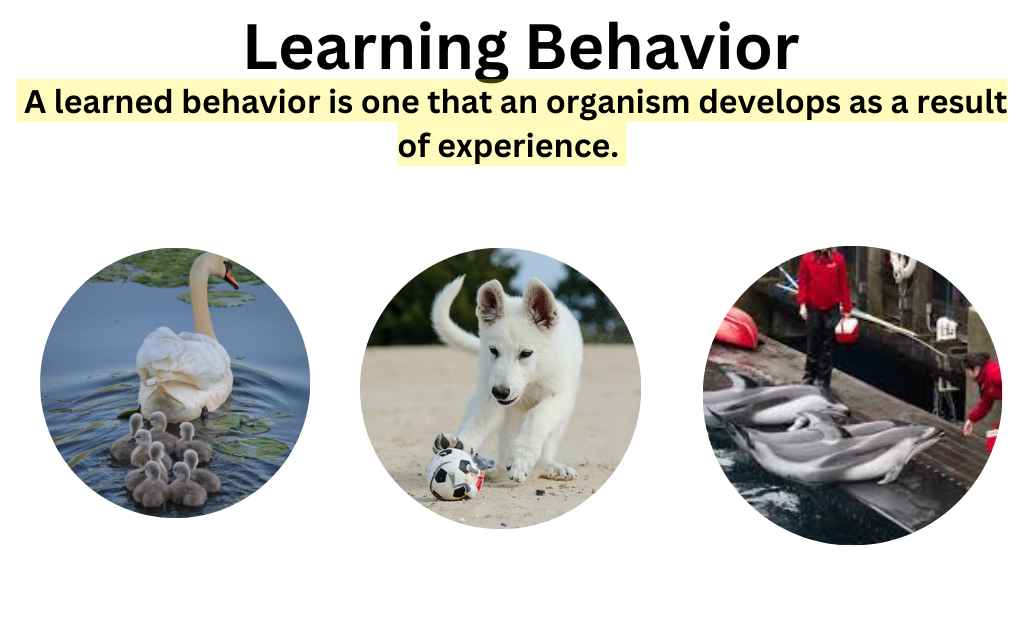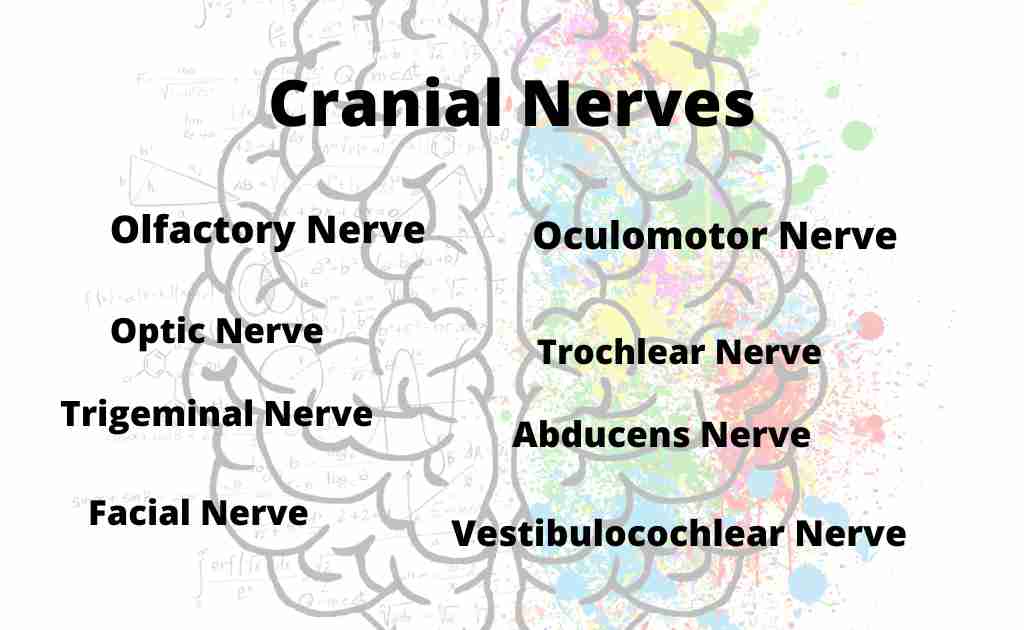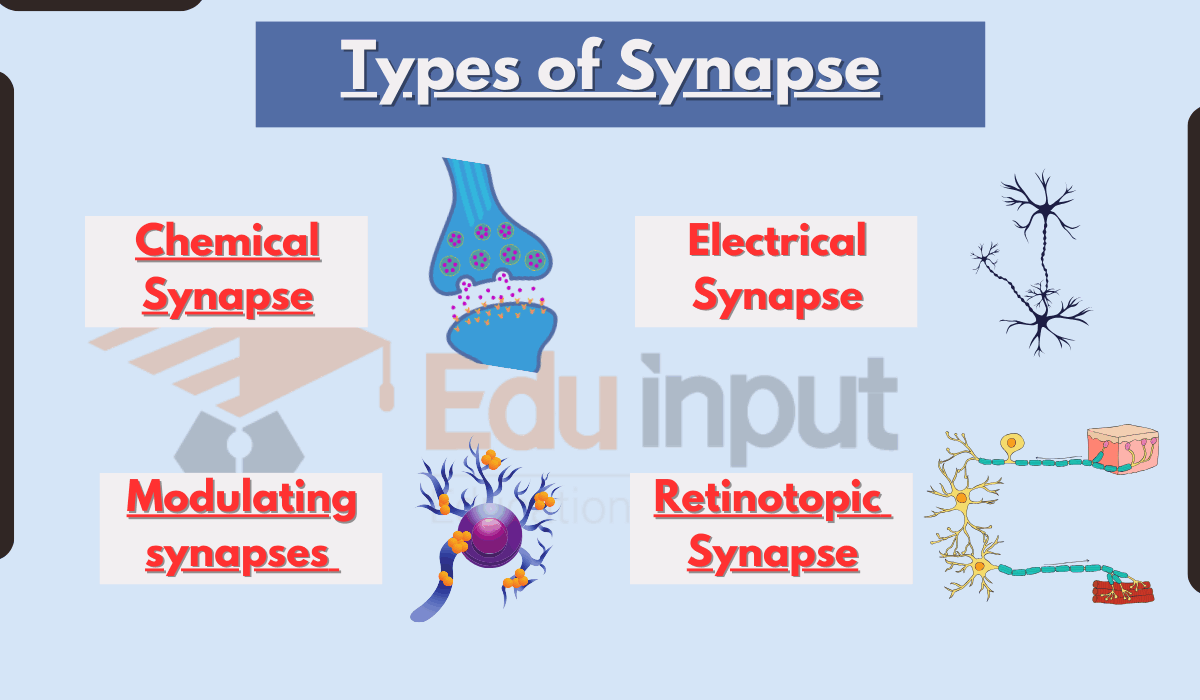Learning Behavior, Definition and Types-Ecology
The change of behavior to life experiences is called learning. Thorpe defines learning in the following words: the process which manifests itself by adaptive changes in individual behavior as a result of experience is called learning.

Types of Learning Behavior
Thorpe classified learning behavior into six types:
- Imprinting
- Habituation
- Conditioning or conditioned reflex type I.
- Operent conditioning or conditioned reflex type II.
- Insight learning.
- Latent learning
Imprinting
The process by which an animal forms an association with another animal or object in the environment during a sensitive period of development is called imprinting.
It is best known in birds such as geese, ducks, and chickens. Shortly after hatching, ducklings and other young birds tend to follow moving objects in their surroundings.
They show a brief sensitive period. In this period, the shape and form of objects can be imprinted on the young bird. So the young birds will follow them. Normally the first moving object is its mother bird.
The young birds learn her appearance and follow her. However, if its parents are absent, a young bird may imprint on other species. These species may be other birds, human beings, or inanimate objects.
In later life, such birds prefer to court and mate with these imprinted objects and do not mate with their species.
Habituation
The decline in response to a harmless, repeated stimulus is called habituation. Habituation is the simplest form of learning. It involves modification of behavior by diminishing response to repeated stimuli.
A loss of response to repeated stimuli is useful for animals. It prevents the wastage of energy. Thus the animal does not lose attention for trivial purposes.
Example Of Habituation
A snail is crawling on a sheet of glass. If someone taps the glass sheet, the snail retracts into its shell. After a pause, it emerges and continues moving. A second tap causes retraction again. But it emerges more quickly. Ultimately, tapping has no effect and the snail does not show a response.
Rodents respond to alarm calls by others in their group. If these calls are continued and no danger is confirmed, further calls may be ignored.
Conditioning Or Conditioned Reflex
The pairing of an irrelevant stimulus within a natural primary stimulus that produces an automatic response is called conditioning or conditioned reflex type I.
Pavlov conditioned the dogs to secrete saliva on the ringing of the bell. It is not a normal stimulus for the secretion of saliva. He rang the bell just before giving food to the dogs. So the dogs became conditioned to a secondary stimulus or conditioned stimulus (ringing of a bell). Thus it started secreting saliva in response to it like a natural stimulus.
The conditioning process removes dependence on one kind of reflex symbol for action. So this type of learning increases the ability of an organism to react appropriately to environmental changes.
Operent conditioning
Trial and error learning is called operant conditioning. It is a more complex type of learning than habituation. This type of learning was studied by Tharndike and B.F. Skinner. They were Harvard psychologists.
The achievement of the particular goal is a reward for the animals under natural conditions. This reward changes the random activities into a behavioral pattern. Trial and error repetitions, step by step, lead to final achievement.
Experiments on rats and cats were performed. They were allowed to run through a maze. They can find food in the maze. Or they can depress a lever and Experiments come out of the cage. In this case, the first experiment is accidental, and then it is rewarded. So animal learns with later experience.
Latent learning
Thorpe defined latent learning as the association of indifferent stimuli or situations without patent reward. Suppose we put a rat in a maze. It wanders through it and accidentally gets food. The rat learns something from its first experience.
If we put the rat in the same maze again, it may directly reach the food. That means when the rat was wandering, it did learn something without even the incentive or any reward.
Insight earning
A complex form of learning that requires the manipulation of mental concepts for developing adaptive behavior is called insight learning. Kohler performed many experiments on a chimpanzee.
He showed that chimpanzees have a higher form of learning called insight learning. Insight learning is an extreme case of behavioral modification. It involves the application of insight or reasoning to a novel situation.
An animal can use its behavior to solve a problem. He has no previous experience with it. Thus it has used reasoning for solving this problem. During reasoning in humans, a person thinks about an external situation in his imagination.
He manipulates his concepts to produce a solution. This solution can be applied to those situations. Such insight or reasoning is also found in other primates. This is the highest form of learning.
Example Of Insight earning
A chimpanzee is placed in a cage. Hang a piece of any fruit from the ceiling. Place some boxes of different sizes in the cage. This chimpanzee cannot reach the fruit.
After a short period of head scratching, the chimpanzee moves the largest box and piles other smaller boxes over it and climbs up to reach the fruits.





Leave a Reply